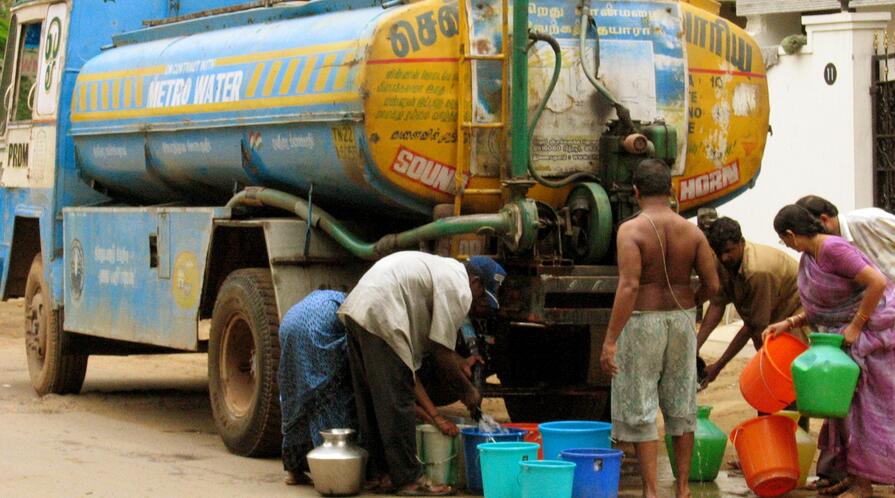The Political Economy of Water Delivery in India
The Political Economy of Water Delivery in India

As part of a Center on Food Security and the Environment event, World Bank Country Director for India Junaid Ahmad discussed the political economy of water and managing service delivery in the world’s second most populous country.
Ahmad began his talk with a story about how he first began to understand how people receive water in India. The year was 2000, and he was in Delhi with his friend, the city manager of Johannesburg. His friend noticed that water was being stored in tanks on top of houses and buildings, and was appalled.
Water was stored in tanks because cities in India typically only receive five to seven hours of intermittent water, rather than 24/7 water from constantly supplied pipes. So, to mimic 24/7 water, many Indians store water in tanks. Water storage tanks, however, are often problematic.
“What's wrong with intermittent water? First, intermittent supply has the worst health effects, number one. Number two, intermittent supply acts like a water hammer. And when that happens, pipes break,” Ahmad said.
Ahmad discovered that the reason for this intermittent water supply was so that the Delhi Water Agency could give out more contracts to fix broken pipes.
“Very simply [the problem is] that the water agency is run by the chief minister of a state who is the policymaker, the provider and the regulator. Judge and jury are the same,” Ahmad said. “This creates the type of incentives that no one really cares about whether water gets delivered or not.”
Ahmad concluded that the issue of intermittent water supply was far more about politics and economics than it is about water. “This has nothing to do with water. It's got everything to do with the political economy of how service delivery happens … How do you create the separation of powers?” he asked.
Ahmad’s solution comes in three parts, oriented around creating markets for water delivery. Those who are both policymakers and providers must choose between their two positions. The state and the water company must be distanced. “Let the water company be run as a commercial entity. Don't run it as a department of government,” he said.
Finally, Ahmad said, water must be priced. “I often say that the most expensive water for poor people is free water. Because whenever you're delivering free water, it's the middle class that gets the water not the poor.”
Ahmad also spoke briefly about the issues of groundwater depletion and water pollution in both India and China. To him, the solution to each of these problems, as with the solution to intermittent water supply, is capitalist markets and competition between the states of India. “You allow the natural resource endowment of these states to drive the economics of those states, that … may well create competition towards more, better service delivery,” he said.
“Ultimately, if I were to define the water crisis of India, it is a political economic crisis of institutions. Unless India begins to truly create a separation of powers between who's the policymaker, who's the regulator and who's the provider, it will continue to face these problems that I'm talking about,” Ahmad said.
Watch the full talk here or below: https://www.youtube.com/watch?v=zW5zM58OAZM&feature=youtu.be
